The L.T. Wright Genesis is one of my go-to bushcraft knives. So it took some convincing for me to believe it could be improved upon.
If you’re looking for the ultimate bushcraft knife, the Genesis 6 is worth considering.
by Leon Pantenburg
Disclaimer: I did not get a free knife to review, and was not paid to write this review. No one had any input, or influence, on the content of this post. All opinions expressed here are strictly my own. All I ever promise is a fair review.
If you could only have one knife to do everything in a survival/bushcraft situation, what would it be?
“Here we go again,” you’re already thinking. How many times does that question come up on social media? That horse has been beaten to death!
But that was a real life scenario Larry Roberts found himself in when he decided to test his skills and knowledge on Vancouver Island in Canada. Roberts was a contestant on Season Two of “Alone™” on The HISTORY Network. Roberts, from Pine City, Minnesota, was one of ten participants chosen to survive in the wilderness on their own in Season Five in Mongolia.
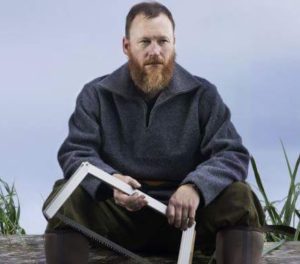
Alone contestant Larry Roberts.
Each contestant can choose ten special items to help with shelter, water, fire, and food. Among his ten items for Season Two, Roberts chose to take the L.T. Wright Genesis Scandi. The Genesis was used daily. Roberts carved spoons, made traps, fashioned a spear, and did countless other projects. Roberts was the runner-up; he ended up staying for 64 days.
In Season Five, Roberts took a bigger, tougher L.T. Wright Genesis. The Genesis 6, Larry Roberts model knife, celebrates his accomplishment.
I got a Genesis 6 several months ago, and it has been worked hard. IMHO, a survival/bushcraft knife that is going to be severely tested (Read: Have the hell beat out of it!) should have a full-tang blade, of A2 or CPM 3v steel with a micarta handle. Also IMHO, that knife should be able to perform nearly every bushcraft skill reasonably well. The Genesis 6 had a lot going for it right off the bat.
Here are the Genesis 6 specs (Courtesy of DLT Trading)
- Overall Length: 11.23″ (285mm)
- Blade Length: 6.26″ (159mm)
- Cutting Edge Length: 6.23″ (158mm)
- Blade Thickness: 0.117″ (2.95mm)
- Blade Steel: A2 Tool Steel
- Handle Material: Black Micarta – Matte Finish – White Liners
- Handle Thickness: 0.91″ (23.07mm)
- Weight: 9.4oz (150.4g)
- Country of Origin: USA
I met Larry Roberts at the L.T. Wright booth at the 2019 BLADE show, in Atlanta, Georgia. Roberts a great guy to talk to, and clearly knows his stuff when it comes to survival tools. His original Scandi Genesis worked great in Season Two, Roberts said, but he thought the added blade length would make it a better survival tool.
“I could only take ten items, so I had to choose carefully,” Roberts said. “Since I didn’t have an ax or hatchet, I had to baton wood, and the extra blade length made it easier.”
Well, I’m lukewarm about batoning wood – it gets way too much attention, IMO, and is not an indicator of knife quality. But Roberts is certainly a skilled survivalist, and knew what he was getting into in Mongolia. He needed the best survival knife he could find.
You could not ask for a better, more intensive field test on that knife than what Roberts did in Mongolia. While my testing is nowhere near as intensive, here is what I found.
The good stuff:
Handle: The Roberts Genesis has a broomstick handle because Roberts found the thicker handle easier to hold and control. It also has thumb scallops and a sharpened spine for striking a fire steel against.
I have always liked a thick handle, mainly because of my big, working man hands. Check out any hammer, hatchet or hand tool. You won’t find dainty, slender handles. For a user tool, you need to be able to get a good grip.
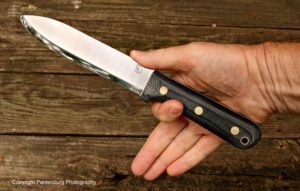
The well-designed broomstick handle is perfect for a tool that will be worked hard and for long periods of time.
I never noticed any hot spots from the handle while using. That is partially from the design. The other factor is that I have toughened hands from paddling a canoe or kayak and working with hand tools. I rarely get blisters or sore hands anyway.
Spine: The Genesis 6 spine is sharpened at a 90-degree angle, like an ice skate. This, again, was feature Roberts specifically wanted. The spine can be used to shred tinder and scrape a ferro rod to make sparks for starting a fire. Roberts used this feature regularly, and here is why you should consider the spine when investing in a knife.
Point: The spear point is a good choice for a survival knife. It was the favored point for Viking swords, and is a good choice for a knife that could be used for thrusting or piercing. It also makes the knife more effective for drilling in wood.
Grind: The Genesis 6 had a Scandi grind, which works well for wood working and various survival skills. I prefer a full convex grind. (Here is why.) I have proven to my satisfaction that the convex is the best overall grind, for me, for what I use a knife for. It’s hard to argue with Roberts’ success though, and he could have had any grind he wanted. Obviously, the Scandi grind was the best choice for him, and what he anticipated using the knife for.
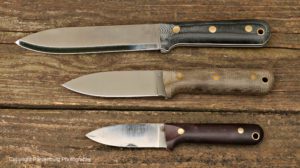
Family portrait: The Genesis 6, top, has a 6.23-inch blade, the standard Genesis has a 4.25-inch blade and the GNS has a 3-inch blade. All of these L.T. Wright knives are excellent.
Blade length: Here is another subjective choice that is going to depend on the situation. For bushcrafting and hunting purposes, I want a rigid blade knife with a blade length of between 3-1/2 to 5 inches. For meat cutting and butchering, a longer length is better. Roberts clearly knew what he needed, and did very well with the 6.23-inch length. (Here is how to choose the blade length for your knife.)
Steel: Contestants couldn’t take sharpening equipment, Roberts said, but he never needed to sharpen his knife in Mongolia. The A2 tool steel in the blade didn’t get dull, he said.
I love the supersteels, such as CPM 3V, CPM 4V, Elmax etc., but that doesn’t make them the best steel for every application. A2 is cheaper than many of the supersteels, and I think it gets overlooked sometimes in favor of something perceived to be better. (Here is more about why A2 might be the best choice for your next knife.) Roberts could have gotten any supersteel he wanted, but elected to go with A2.
Blade thickness: The blade is stamped with Roberts’ rendition of his Vancouver Island nemesis – a mouse. “It became an obstacle for me to overcome,” he said of the creature he battled during the show. The blade is sturdy, at .11 inch, but not so thick as to be cumbersome. The knife was used for everything in a real survival situation, and came through with flying colors. The quality knife design, and Roberts’ skill, meant this knife would last a long, long time time in a survival situation.
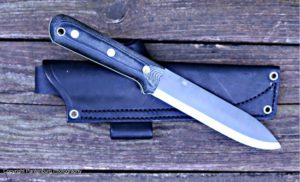
The leather JRE sheath does a great job of protecting the edge and the user.
Sheath: The Genesis 6 comes with a sturdy leather sheath made in America by JRE Industries. I have used these excellent sheaths for years, and have yet to have the first problem. The Genesis 6 sheath is a dangler, which is one of my favorites.
Made in the USA: All L.T. Wright knives are made in Wintersville, Ohio, by skilled American craftspeople. The company and employees pay local, state and federal taxes, and contribute to their communities. Buy local, buy American!
Do you need a Genesis 6?
Frankly, I’m a little intimidated about making many suggestions, after Roberts has wrung this knife out so extensively. But since you read this far, here are some thoughts.
The Genesis 6 is a fantastic choice for the one knife survivalist. And if you can only have one knife, the Genesis 6 would be an excellent choice.
But I never have just one tool in my daypack. For deer hunting, I might take along a folding saw and possibly a hatchet or machete. If I anticipate having to process firewood, I would take a hatchet or ax. I’ll go with a large knife for the initial gutting of a big game animal, use a smaller knife for skinning, then go back to the larger knife for quartering and disjointing the lower legs. I’ve completely processed a whitetail deer with one knife, but that is not my first choice.
If I could take my Gerber Freescape folding saw and Leatherman WAVE multi-tool into a survival situation, my survival/bushcraft knife choice would be an A2 Genesis, 1.25 Bravo LT or my Ambush Tundra.
But Roberts didn’t have those choices. For what he needed, and for any hard core survival situation, it would be hard to find a better do-it-all knife than the Genesis 6.
Please click here to check out and subscribe to the SurvivalCommonSense.com YouTube channel – thanks!

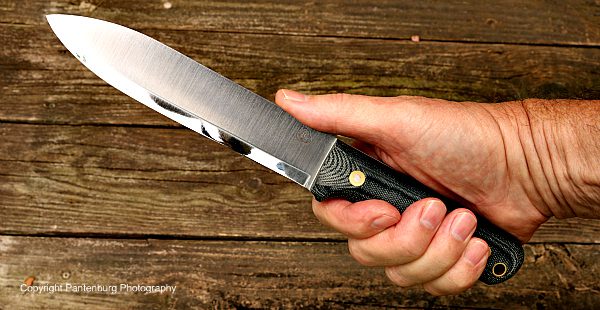
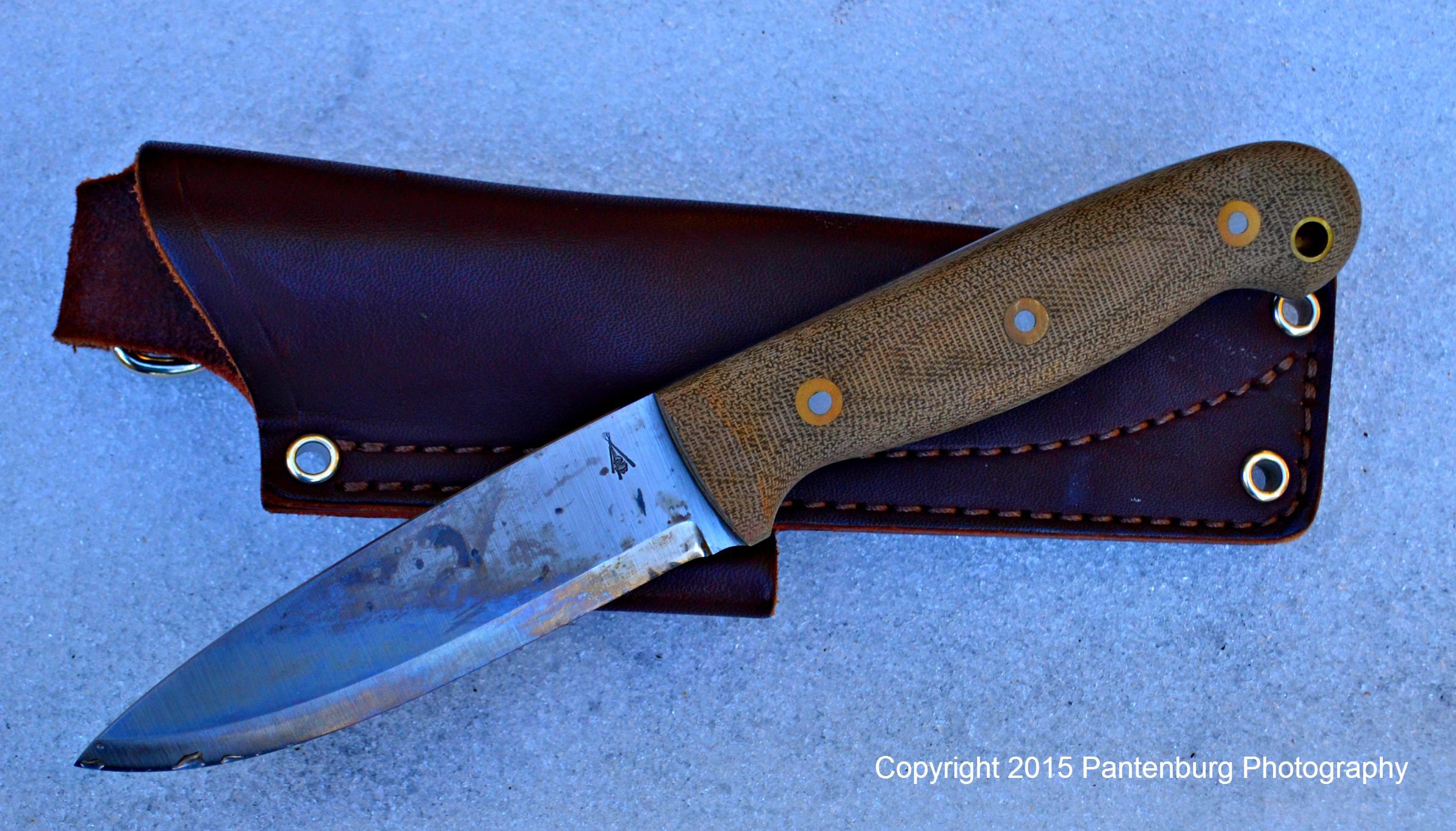
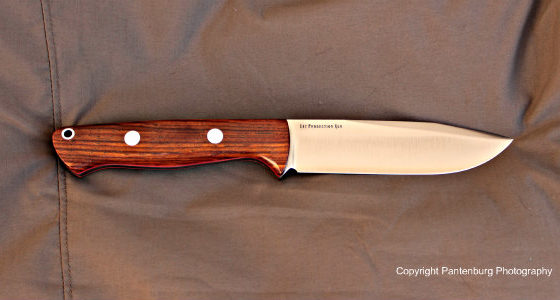
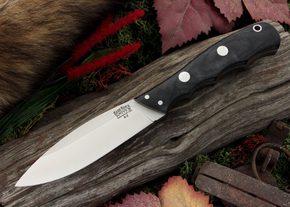
Leave a Reply